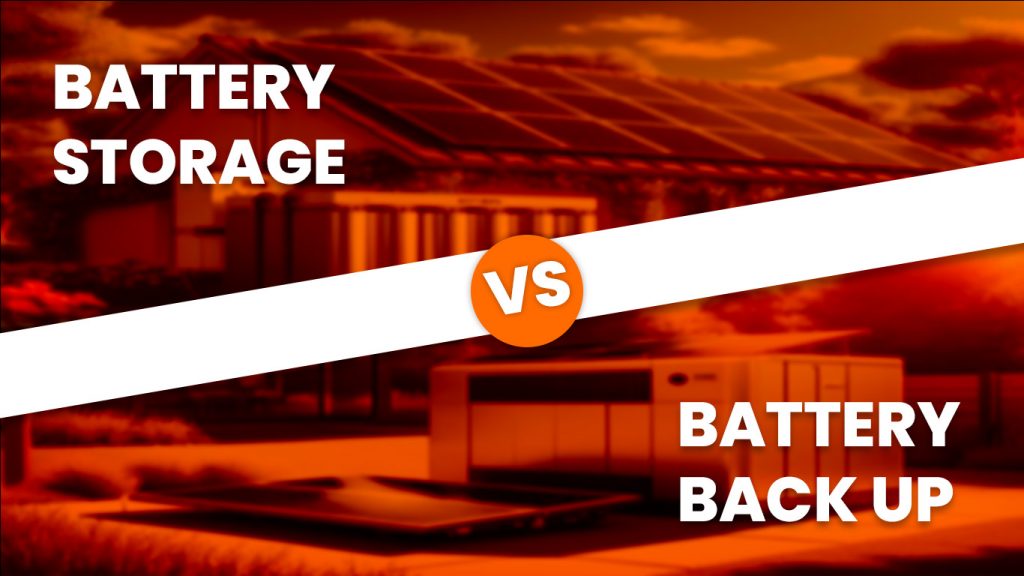With all the buzz around battery systems these days, it’s easy to get confused between battery storage and battery backup. While they both involve storing energy, they serve very different purposes.
Whether you’re prepping for power outages, looking to save money with new net-metering rules, or just trying to reduce grid dependence, it’s crucial to know the difference.
Battery Storage: Powering Through Peak Demand
Battery storage systems are all about managing energy more efficiently. These systems are designed to work alongside your existing power grid and can kick in when the grid is strained—like during peak hours when everyone’s cranking up their air conditioners.
Think of battery storage as a way to smooth out energy supply and demand, making sure you have extra power when the grid is overloaded or during planned disruptions.
But here’s the real beauty of battery storage: it plays nice with renewable energy. Solar panels or wind turbines generate energy, and your battery storage system holds onto that power for later use.
With these systems, you’re not just relying on the grid—you’re pulling from your own renewable sources when it makes the most sense.
Plus, they can be configured to automatically switch on and off depending on when energy is most expensive or when grid demand spikes, saving you money and reducing strain on the power infrastructure.
In short, battery storage helps you use energy smarter, smoothing out your usage over time, especially when energy is in high demand.
Battery Backup: Your Lifeline in Power Outages
Battery backup systems, on the other hand, are your insurance policy for blackouts. Whether it’s a planned outage, a storm knocking out power lines, or a surprise grid failure, battery backup systems step in to keep the lights on. They store energy when the grid is working normally, and when the power goes out, they release that stored energy to keep your essential devices running—whether that’s your refrigerator, your Wi-Fi, or even your entire home.
Battery backup systems can be tailored to your needs. Maybe you only want to keep a few critical appliances powered during an outage, or perhaps you want full home coverage.
Either way, backup systems are designed to ensure you have uninterrupted power for the essentials, no matter what the grid is doing. And yes, they can be paired with solar panels or other renewable energy sources to keep your battery charged sustainably, even when the grid is down.
Can You Have Both? Absolutely!
With the right setup, you don’t have to choose between battery storage and backup—you can have both. Hybrid inverters like Sol-Ark or integrated systems from brands like Enphase or SolarEdge can manage both storage and backup functions.
These systems allow you to optimize energy use during normal conditions (thanks to battery storage) and provide seamless power when the grid goes down (with battery backup).
Which System is Right for You?
Here’s the bottom line: battery storage systems are ideal for managing energy costs and reducing grid reliance, while battery backup systems are all about providing peace of mind when outages happen.
If you want to make sure your home is ready for any situation, a hybrid setup might be your best bet.
Want to explore your options? Reach out to SunHub for a quote, and they’ll help you design a solar system that fits your needs—whether you’re focused on efficiency, reliability, or both!

